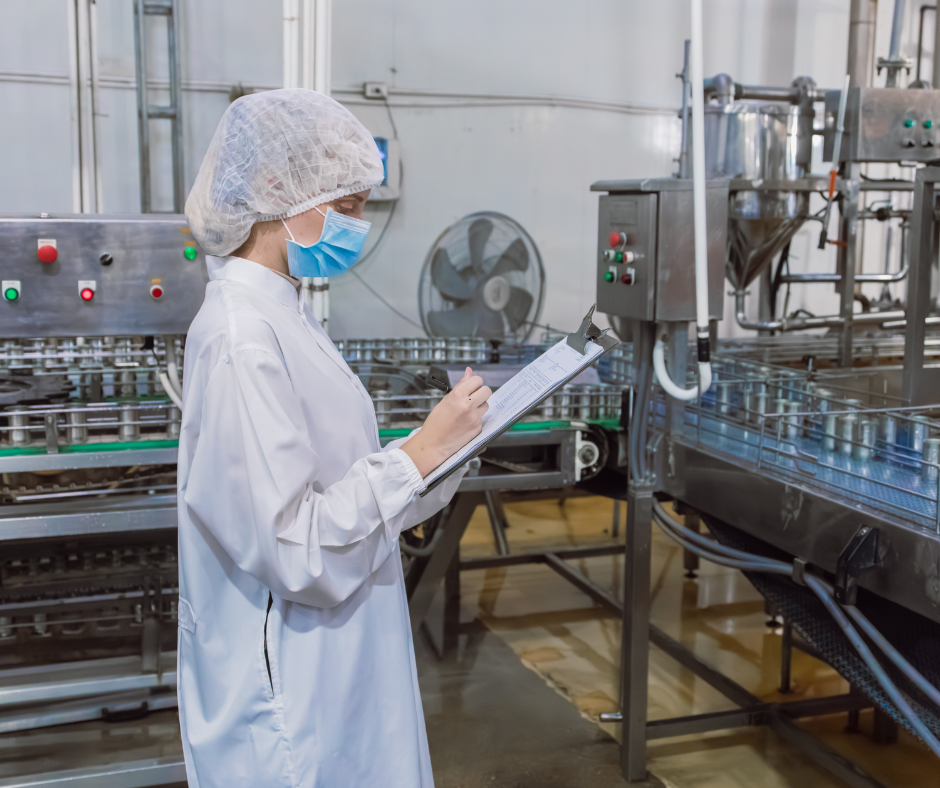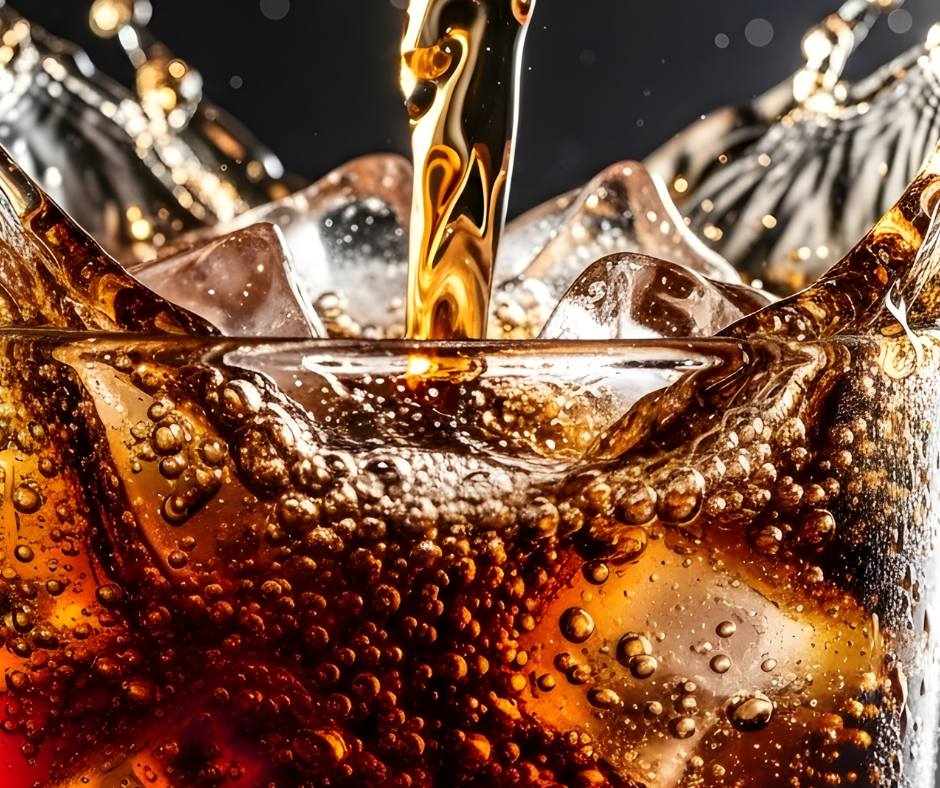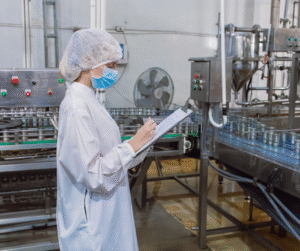Why does some beer pour perfectly, while others come out flat, foamy, or off in taste?
The answer often lies in how the beer is dispensed — and more importantly, the quality of the gas behind it. CO₂ isn’t just there to push beer through the lines; it plays a direct role in how that beer looks, tastes, and feels when it reaches the glass.
If you run a brewery, bar, pub, or fast-paced hospitality venue, the way your beer is served can have a big impact on the customer experience. From carbonation and head retention to clarity and mouthfeel, small changes in your gas setup or line hygiene can make a noticeable difference.
This article is a practical guide for brewers, bar staff, and quality assurance teams who want to serve consistently great pints. We’ll cover:
- The link between beer quality and how it’s dispensed
- The most common beer dispensing systems and how they work
- Why CO₂ purity matters more than you might think
- How to avoid taste taint, flat pours, and foaming issues
- Tips on choosing the right gas filtration for your setup
Let’s take a closer look at what really makes a pint pour perfectly.
Why Beer Dispensing Matters to Quality
Pouring a pint isn’t just a mechanical task — it’s the final step in delivering the beer exactly as the brewer intended. When done right, it brings out the full flavour, aroma, and texture of the drink. When done poorly, it can leave customers disappointed, even if the beer itself is excellent.
What’s at Stake with Every Pour?
Every part of the dispensing process plays a role in how a beer looks, tastes, and feels. A clean, balanced system with high-purity CO₂ protects quality and keeps customers coming back. A neglected or poorly set-up system can ruin it all in seconds.
Here are the key quality markers affected by the way beer is dispensed:
Carbonation and Mouthfeel
Too much or too little CO₂ affects how the beer feels in the mouth. The right gas pressure helps maintain a consistent level of fizz that matches the beer’s style — whether that’s a crisp lager or a creamy stout.
Head Retention and Lacing
The foam on top of a pint isn’t just for show. It protects the beer from oxygen and delivers aroma with every sip. A good dispense system supports a stable head and visible lacing on the glass — signs of quality that customers notice.
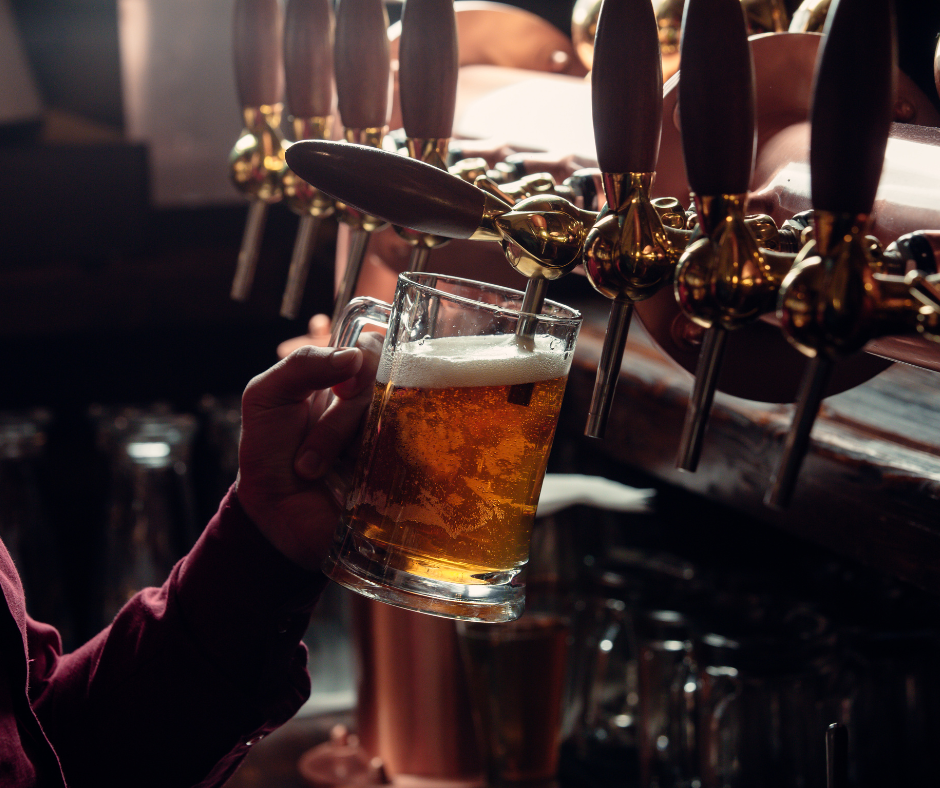
Temperature Consistency
Beer should pour at the right temperature, every time. A well-calibrated system helps maintain that ideal range, preserving both taste and drinkability.
Line and Gas Cleanliness
Dirty lines or contaminated gas can introduce off-flavours, sour notes, or flat beer. Even high-end beer won’t survive a poor gas supply. That’s why many brands now use gas filtration to remove impurities before they reach the pint.
Poor Dispensing Hurts More Than the Beer
Bad pours do more than waste beer — they damage your reputation. Customers may blame the beer, not the tap. Breweries lose control over how their product is experienced. For hospitality venues, that means lost revenue, wasted stock, and fewer repeat customers.
The Best Ways to Dispense Beer
There’s more than one way to get beer from keg to glass. Each method has its place — from busy pub bars to small taprooms and festival fields. But no matter the setup, one thing stays true: clean, well-filtered gas plays a crucial role in keeping beer fresh and consistent.
Let’s explore the most common beer dispensing methods, how they work, and why gas quality matters.
Draught Beer Systems in Pubs and Restaurants
This is the most familiar setup — the classic bar tap system found in pubs across the UK.
How it works:
Beer is stored in pressurised kegs and pushed to the tap using CO₂ or a CO₂/nitrogen blend (commonly called beer gas). The system relies on the right balance of gas pressure (PSI) to move the beer and maintain carbonation.
Where it’s used:
Pubs, restaurants, hotels, sports bars — anywhere with a fixed bar.
Pros for quality:
Offers full control over pour speed, head retention, and serving temperature. Works well for high-throughput environments.
Challenges:
Dirty gas or poorly maintained lines can cause off-flavours, flat pours, or foamy beer.
CO₂ quality relevance:
A clean CO₂ supply is essential. It directly touches the beer — if the gas contains impurities like sulphur or benzene, the beer will absorb them. Installing a final-stage filter such as Sure Purity’s Carboguard Mini helps prevent this, especially in smaller gas systems.
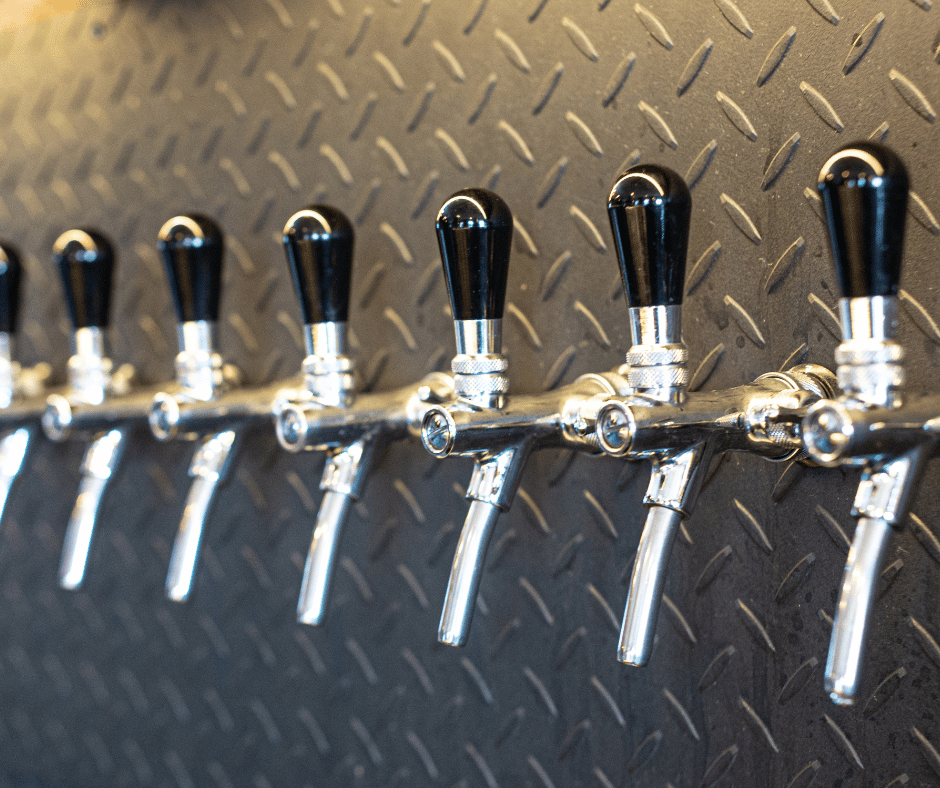
Direct Draw Systems for Microbreweries and Taprooms
Simple and effective, this method is ideal for short-distance dispensing with a minimal footprint.
How it works:
Kegs are stored inside a refrigerated cabinet or kegerator directly beneath the tap. Beer is pushed with CO₂ over very short lines.
Where it’s used:
Taprooms, small breweries, tasting rooms.
Pros for quality:
Short lines reduce contamination risk. Easier to clean and maintain.
Challenges:
Gas purity becomes even more important due to the lack of blending or long-distance buffering. One tainted gas cylinder can affect every pour.
CO₂ quality relevance:
Because microbreweries often serve unfiltered or small-batch beer, the risk of flavour spoilage is higher. Using a dedicated polishing filter ensures the gas stays clean from tank to tap.
Long Draw Systems in Large Venues
These setups are designed to move beer over long distances — often tens of metres.
How it works:
Beer is kept in a central cold room and pumped to bar taps via long insulated lines. Gas blends help maintain pressure and reduce over-carbonation.
Where it’s used:
Stadiums, concert venues, casinos, multi-bar hospitality chains.
Pros for quality:
Centralised keg management and high-volume service.
Challenges:
Line length increases the risk of temperature rise and foam issues. Gas usage is high, so even minor contamination is magnified.
CO₂ quality relevance:
In these systems, a final-stage gas filtration step is critical. It protects against scale, oil vapour, and hydrocarbons. All of these could damage beer quality and bar equipment.
Cask Ale Dispensing with Low Pressure or Gravity
Traditional cask ale is often served without added pressure — but some setups use low levels of CO₂ to extend shelf life.
How it works:
Beer is drawn directly from the cask, often via a hand-pull pump or gravity pour. Some systems apply low-pressure CO₂ to reduce oxidation.
Where it’s used:
Ale-focused pubs, heritage venues, festivals celebrating real ale.
Pros for quality:
Minimal interference preserves traditional flavour profiles.
Challenges:
Short shelf life and increased risk of ambient contamination.
CO₂ quality relevance:
When CO₂ is used (even at low pressure), filtered gas is vital. Any impurities can quickly taint the beer due to the unpasteurised nature of cask ales.
Portable and Mobile Beer Dispensing Systems
Temporary setups need to be fast, easy, and consistent — even in tough conditions.
How it works:
Kegs are hooked up to mobile taps powered by CO₂ or beer gas tanks. Systems may be cooled with ice or portable chillers.
Where it’s used:
Outdoor events, festivals, weddings, pop-up bars.
Pros for quality:
Mobility and speed.
Challenges:
Higher risk of dirty lines, fluctuating temperatures, and contaminated gas cylinders — especially when reusing equipment between events.
CO₂ quality relevance:
Mobile units benefit from in-line filters that catch any impurities before they reach the beer. For events, where gas sources may vary, filtration acts as a safety net for taste and hygiene.
The Key Components of a Beer Dispensing System
It helps to understand how a typical beer dispensing system works — from keg to glass. Each part of the setup plays a specific role in delivering a consistent, great-tasting pint. If one component fails, the whole system suffers.
Here’s a simplified breakdown of the key components:
1. CO₂ Cylinder
This is the gas source that powers the entire system. CO₂ (or a CO₂/nitrogen blend) pushes the beer from the keg to the tap. The gas also helps maintain carbonation levels in the drink.
2. Regulator
Connected to the CO₂ cylinder, the regulator controls how much pressure is applied. The correct pressure keeps the beer flowing smoothly without excessive foam or flat pours.
3. Gas Line
The gas line carries pressurised CO₂ from the regulator to the keg coupler. If this line becomes contaminated, it can pass impurities directly into the keg.
4. Keg Coupler
The coupler is the link between the keg and the system. It allows CO₂ to enter the keg while letting beer exit into the beer line. Different types of kegs require different coupler styles.
5. Beer Line
This tube transports beer from the keg to the tap. It needs to be kept clean and sanitised regularly to avoid off-flavours, microbial growth, or blockages.
6. Tap or Faucet
The final stop before the beer reaches the glass. A good-quality tap helps control pour rate, foam head, and clarity.
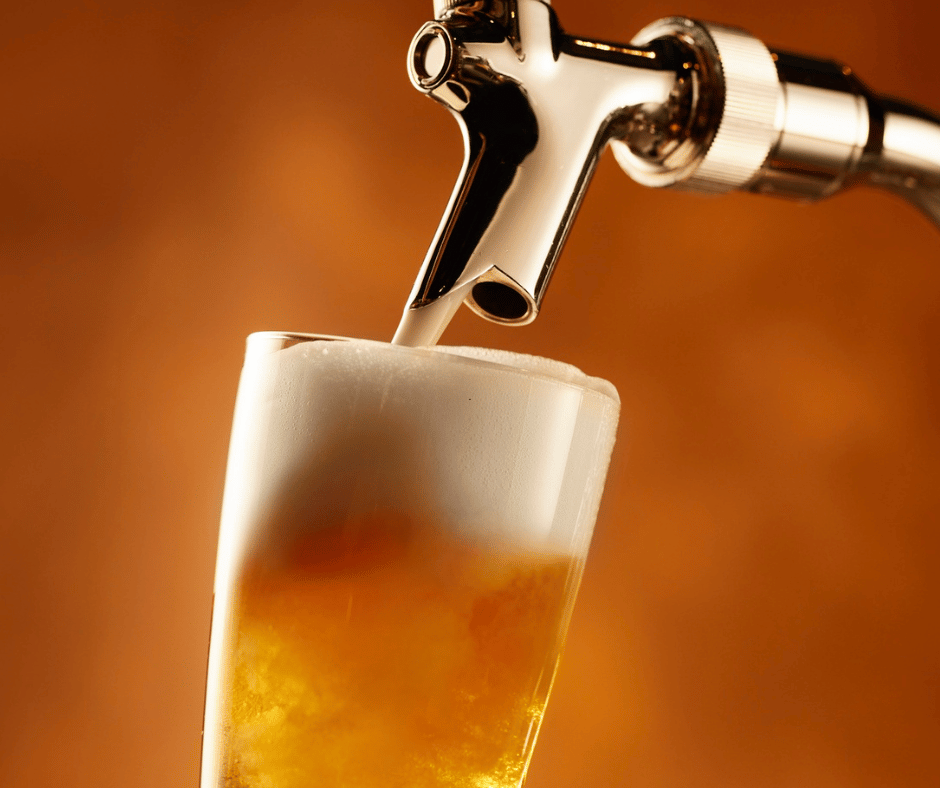
Where Gas Filtration Fits into the System
While many focus on the beer lines and taps, the gas side is just as important — and often overlooked.
Gas filtration should be installed just after the CO₂ regulator, before the gas enters the keg via the coupler. This is the last point where contaminants can be removed before they reach the beer.
Poor-quality gas can carry:
- Benzene
- Hydrogen sulphide
- Methanol
- Oil vapours
- Sulphur compounds
These trace contaminants might seem minor, but even tiny amounts can spoil flavour, ruin head retention, and risk consumer safety.
The Role of Final-Stage Filters
Sure Purity’s Carboguard and Carboguard Mini are final-stage polishing filters designed specifically for beverage gas systems. They trap trace contaminants using advanced filtration media, including activated carbon. For bars, taprooms, and breweries aiming to protect taste and meet hygiene standards, these filters are a vital part of the gas line setup.
The Role of CO₂ in Beer Dispensing
CO₂ does more than just add fizz to your pint. In beer dispensing systems, carbon dioxide plays several critical roles that directly impact taste, texture, and presentation.
CO₂ Pushes Beer from Keg to Tap
When you pour a pint from the tap, it’s pressurised CO₂ doing the hard work. It forces the beer out of the keg, through the lines, and into the glass. All without compromising the brew’s quality. The right level of pressure ensures a steady flow without excessive foam or flat spots.
CO₂ Maintains Carbonation
Beer needs to stay carbonated from the moment it’s packaged to the moment it’s poured. Without enough CO₂ pressure, the beer can lose its sparkle. Too much pressure, and it becomes overly fizzy or foamy. A well-balanced system keeps carbonation consistent, ensuring each pour meets customer expectations.
CO₂ Supports Foam Head Stability
A good head on a beer isn’t just for looks. It helps release aromas, enhances flavour, and contributes to mouthfeel. Clean, stable CO₂ supports foam structure, helping to maintain lacing on the glass and a pleasing texture on the palate.
CO₂ Prevents Oxidation
When oxygen gets into beer, it can quickly spoil the taste — leading to stale, cardboard-like flavours. Using CO₂ as a blanket or pressure gas protects the beer from oxidation during storage and dispensing, especially in systems where the keg is regularly accessed.
The Importance of Final-Stage Filtration
Before CO₂ reaches the keg, it should pass through a polishing filter like Sure Purity’s Carboguard or Carboguard Mini. These filters remove trace contaminants and odours that can leach into the beer. For pubs, breweries, and mobile bars alike, installing a CO₂ filter is one of the easiest ways to protect product quality and meet gas purity standards.
Common CO₂ Contaminants That Affect Beer Quality
CO₂ is vital for dispensing, but if it isn’t clean, it can quickly ruin a great beer. Even trace levels of impurities in gas can lead to off-flavours, unpleasant aromas, and compliance issues.
What Can Be Found in Contaminated CO₂?
Here are the most common gas contaminants and how they affect your pint:
Benzene
A toxic compound that can give beer a chemical taste. It’s also a health hazard, even at low levels.
Hydrogen Sulphide
Often described as a rotten egg smell. Just a small amount can spoil aroma and put customers off.
Methanol
Can taint flavour and poses serious safety concerns. Not suitable for any beverage application.
Aromatic Hydrocarbons
These can create plastic, solvent, or petrol-like notes. Even small traces are enough to affect taste and aroma.
Moisture or Oil Carryover
Can cause flat beer, poor foam retention, or line contamination. Moisture may also promote bacteria growth in the system.
Why It Matters
Contaminants not only affect how the beer tastes and smells — they can also:
- Breach food safety regulations
- Lead to product recalls or customer complaints
- Damage brand trust and repeat business
Purity Standards in the Drinks Industry
To prevent these issues, beverage-grade CO₂ must meet strict limits on allowable impurities. Two key standards are:
- ISBT (International Society of Beverage Technologists) guidelines
- EIGA (European Industrial Gases Association) standards
These set out acceptable limits for contaminants and define what qualifies as food-grade CO₂.
Dispensing Beer the Right Way Starts with Clean Gas
There’s more than one way to pour a great pint — but all of them rely on clean gas and the right setup. Whether you’re running a busy pub, a craft taproom, or pouring pints at a festival, how you dispense beer directly affects the taste, appearance, and customer experience.
We’ve covered the main beer dispensing methods — from draught systems and direct draw units to mobile setups and gravity-fed cask ales. Each has its place, but all benefit from one common factor: high-purity CO₂ delivered safely and consistently.
When gas quality is neglected, things go wrong fast:
- Off-flavours creep in
- Foam collapses
- Pour waste increases
- Customer satisfaction drops
That’s why professionals across the drinks industry rely on Sure Purity’s Carboguard range. Our filters are trusted by breweries, hospitality chains, and QSR venues alike to protect flavour and maintain high standards.
If you’re looking to improve your dispense setup, reduce waste, or protect beer quality across your sites, explore our Carboguard and Carboguard Mini solutions, or Parker DH alternatives. Need more info? Get in touch with our team for tailored advice.

